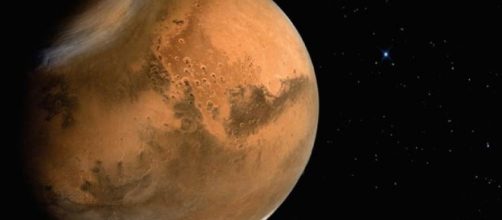Ars Technica is reporting that NASA has started providing some details to its Journey To Mars program as the Trump administration mulls changes to space policy. Bill Gerstenmaier, NASA’s head of human space flight, gave a briefing of what the 2020s will look like for NASA leading up to a Mars orbital mission in 2033.
After the initial test flight of the Space Launch System and Orion in 2018 and the launch of the Europa Clipper to Jupiter in 2022, NASA would set about building a space station in cis-lunar space that would serve as a waystation for Deep Space missions.
That task would require three launches of the SLS over three years to deliver a power module, a habitation module, and a logistic module. Airlocks and other additions would come later that would allow visits by astronauts from NASA, international partners, and the commercial sector. The Deep Space Station would be built as a cooperative effort.
Next, NASA proposes to build the interplanetary transport in the vicinity of the Deep Space Station. The transport would have power systems, a habitation module, and presumably propulsion that will allow it to embark on voyages to Mars. A 300-day shakedown mission in cis-lunar space would take place in 2029
The Mars trip would launch in 2033 and would involve a flyby of Venus before going to Mars, a mission that was once planned as part of the Apollo Applications Project in the 1970s.
The voyage would last three years and would not involve a landing on the Red Planet would presumably would happen later.
The plan is straightforward and easy to understand with defined steps. However, the Journey to Mars may run into the Trump administration’s desire to return to the moon and to include more commercial partnerships starting by the end of the first term. That is not to say that the moon and Mars could not be done in tandem, as Robert Zubrin suggests.
The key to doing all of this is money, more than is being spent currently. No matter the degree of participation of the private sector and international partners, any serious deep space exploration program is going to have to involve an increase in NASA’s budget as well as long-term focus. Is the Trump administration and Congress prepared to provide that money and focus? Stay tuned.

